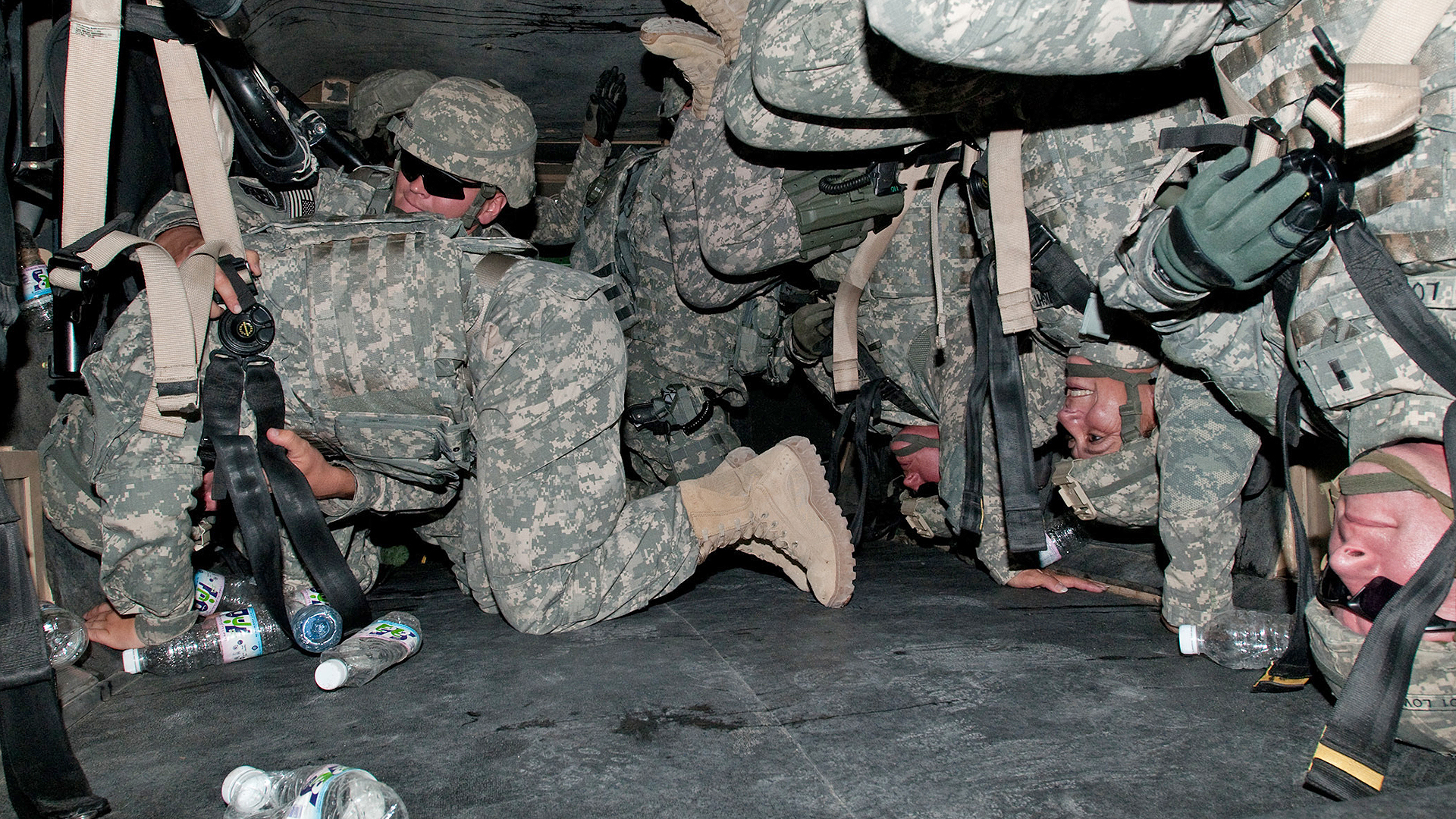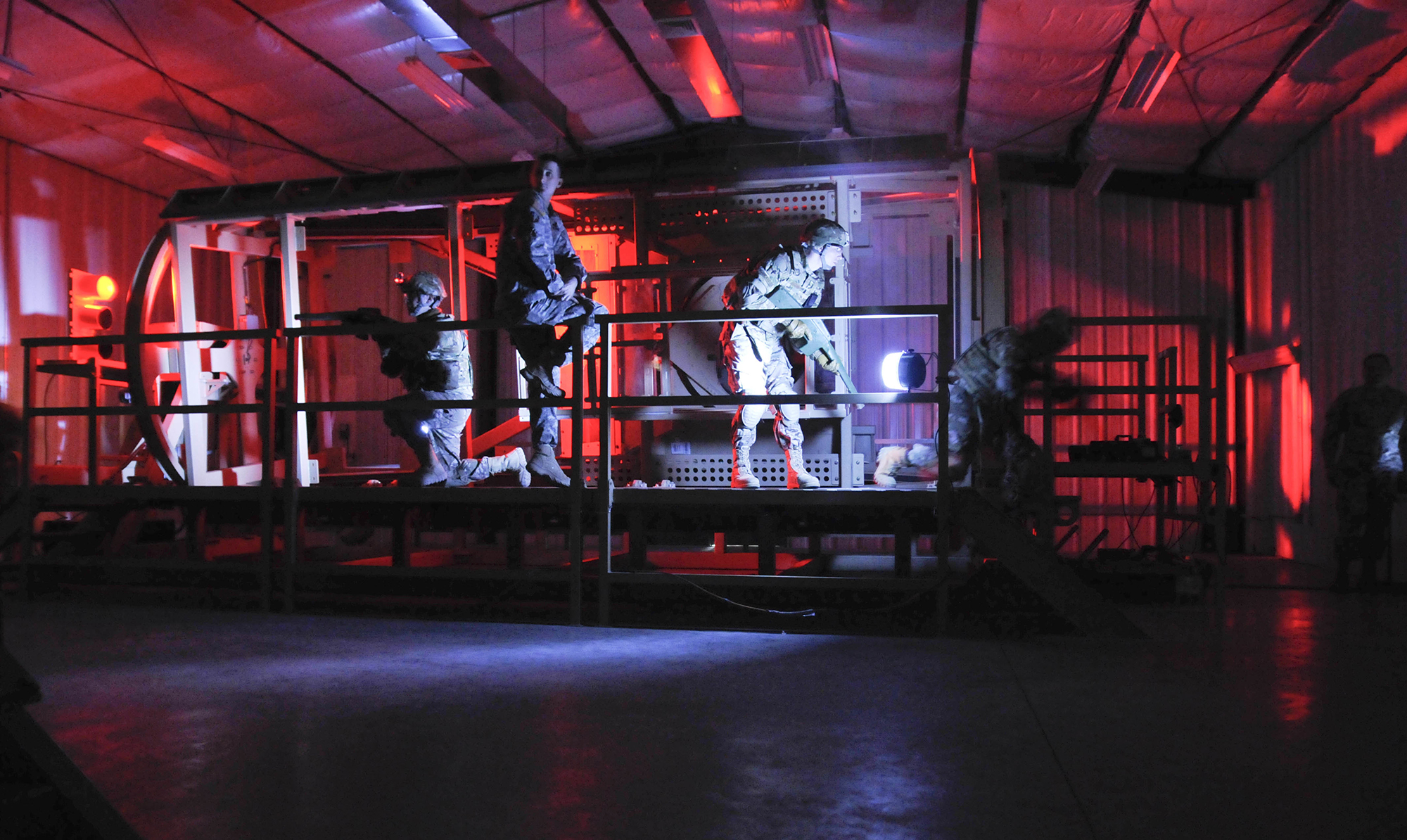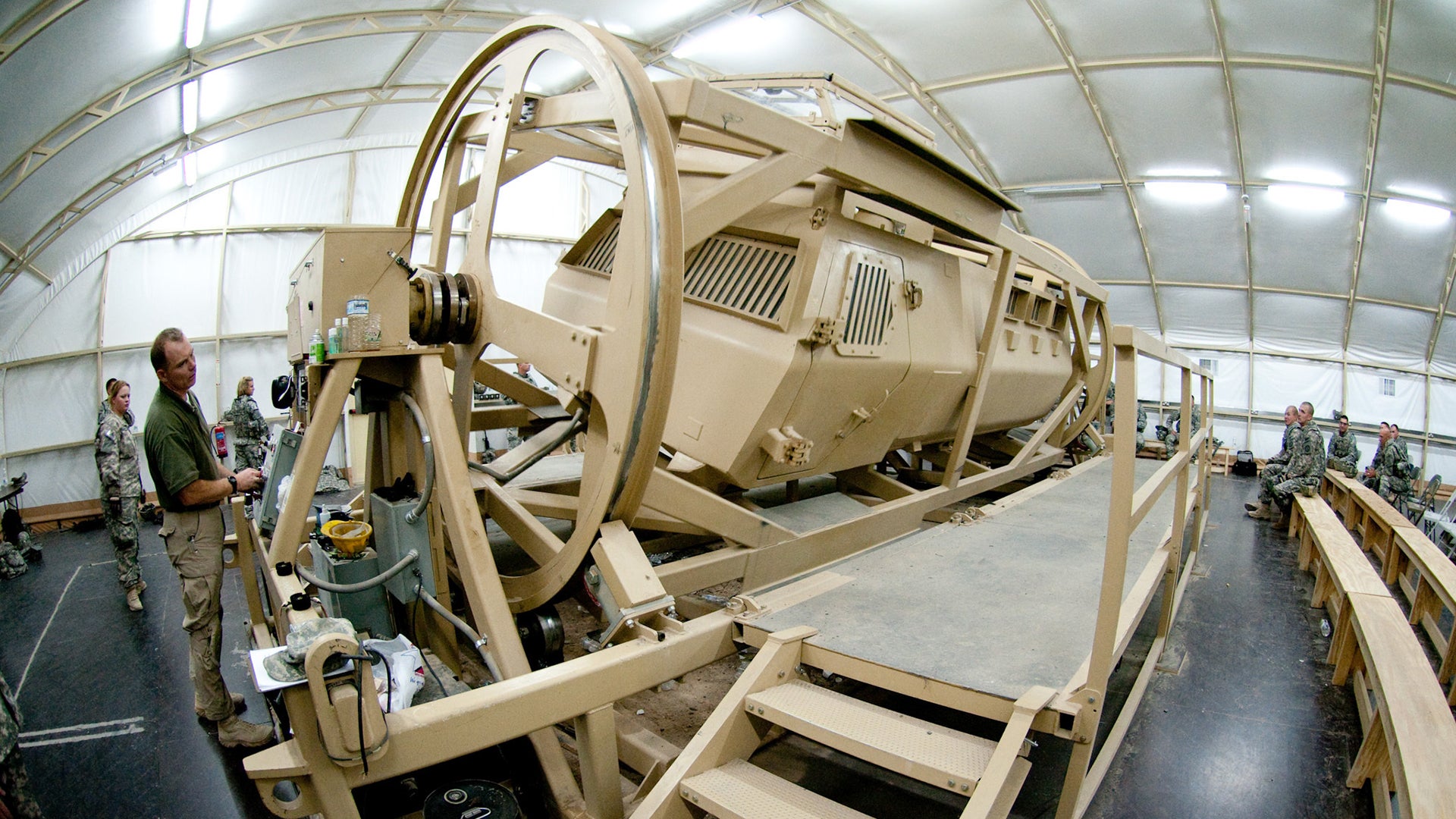Over the last sixteen years of perpetual warfare in the Middle East one thing has become sickeningly obvious—even a heavily armored combat vehicle can be a very deadly place for soldiers.
The scourge of roadside bombs in Iraq and Afghanistan changed the way America fights ground wars forever. Going from zooming around in lightly armored or even unarmored Humvees to rumbling around the battlefield in heavily armored Mine Resistant Ambush Protected vehicles (MRAPs) occurred in just the span of half a decade.
Even if an armored vehicle saves the life of a solider from dying in the IED detonation, that soldier still has to get out of the mangled up-armored Humvee or MRAP that could be laying on its side, or worse, upside down. And it doesn’t take a bomb to make a armored vehicle deadly. Rollovers and accidents have caused many deaths unrelated to direct combat over the last decade and a half of the Global War On Terror. MRAPs in particular, with their V hulls and high centers of gravity are especially prone to rolling.

When any of these events occur, soldiers find themselves still in the familiar confines of their vehicle, but at the same time totally disoriented and even under fire from the enemy. Enter the rollover/emergency egress simulator. These unique devices track their lineage back to the “helo dunkers” used to simulate a crash landing of a helicopter in water. In the civilian world, rollover simulators have been around for decades, with police agencies finding them especially useful for training purposes. But these were largely much cruder apparatuses than the high-tech ones the military has been fielding over the last decade.

Their job is to give soldiers insight into what to expect if they find themselves strapped in their vehicle after it comes to rest at an unusual attitude, and even how to escape with their weapons, being ready to defend themselves from whatever is going down outside.








Although this type of training can look like fun to some, the inside of a armored vehicle is not forgiving to flailing limbs—we are talking about an armored steel can on wheels here, so soft touch surfaces are all but non existent. As a result, these drills will leave their share of bumps and bruises, but they are intended to save lives in the real world when it matters most. And a real roll over, or even worse a roadside bomb or mine explosion, would result in a far harsher ride than what these trainers put their occupants through. Add in smoke, dirt, fire, screams, and even bodily trauma, and you can see why a little muscle memory for a stunned soldier that just had one of their greatest fears come true can go a long, long way.
Contact the author: Tyler@thedrive.com
